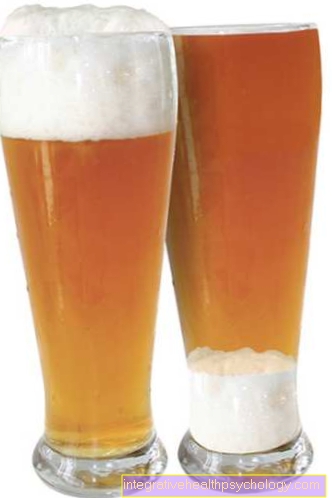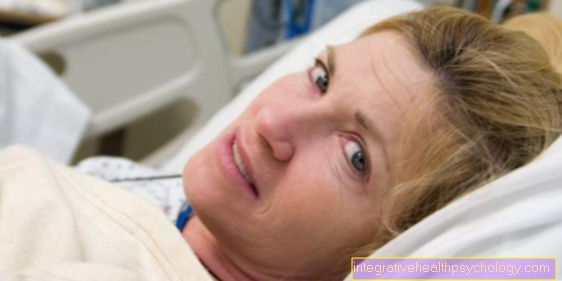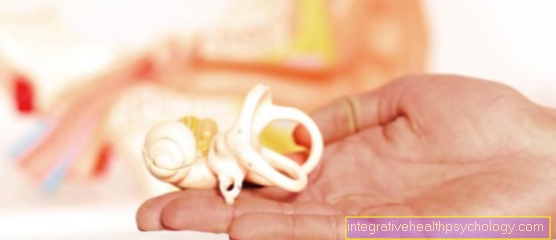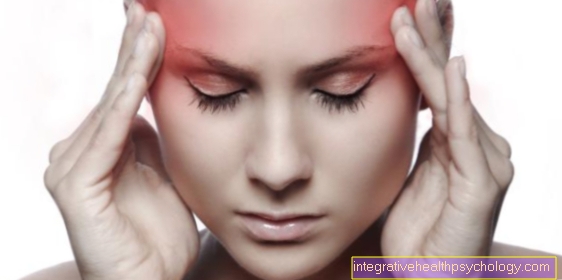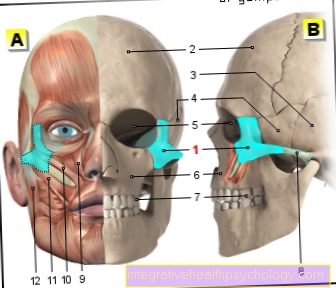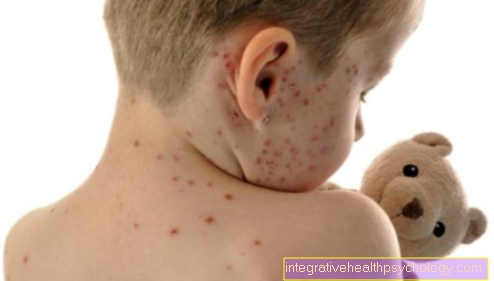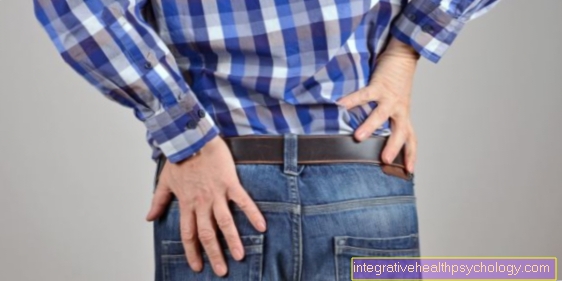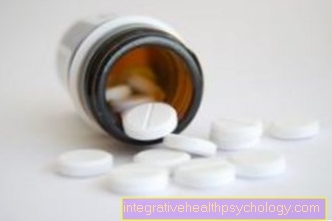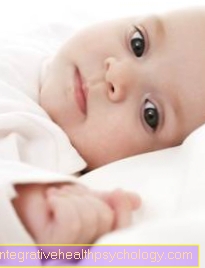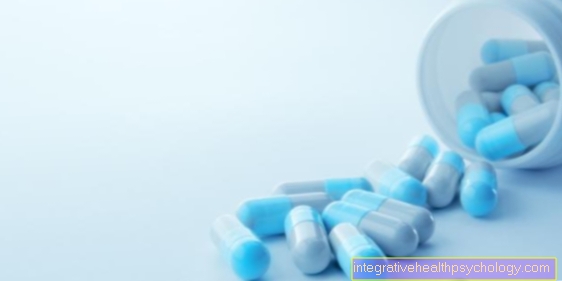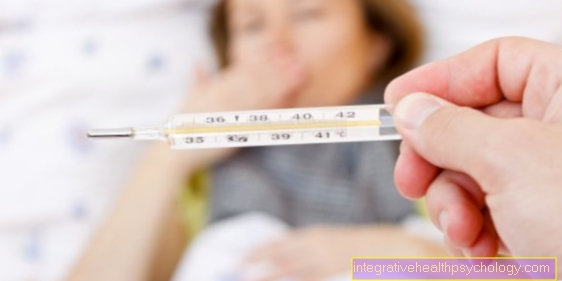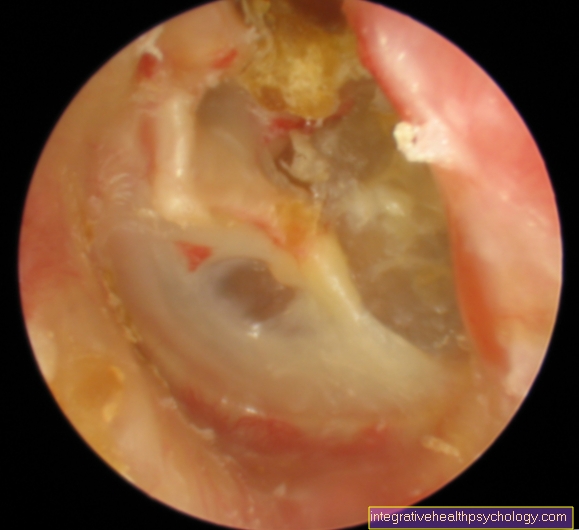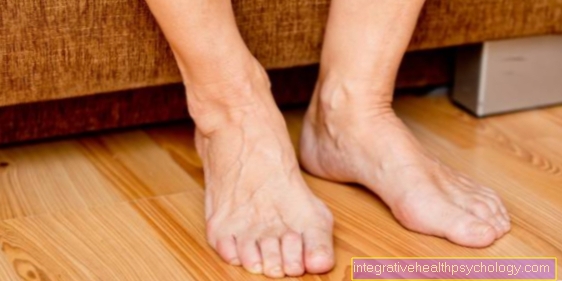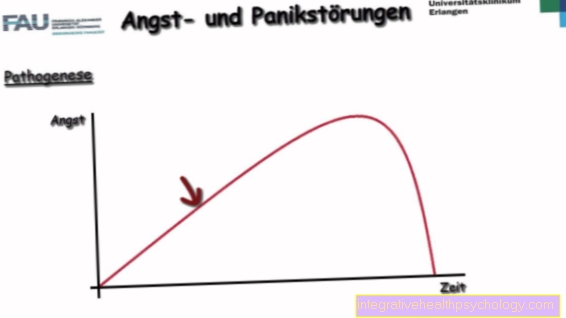Green bowel movements
Green stool is a rather rare occasion for advice from a doctor and in the vast majority of cases is not actually proven to be a disease. One-off events are mostly due to irregularities in the digestive process.
Only repeated or frequent occurrences of green stool should give cause for concern and further clarification. This also opens up a whole range of potential causes that can affect either the liver, the gallbladder or the intestines.
You may also be interested in the following article: Colors of bowel movements
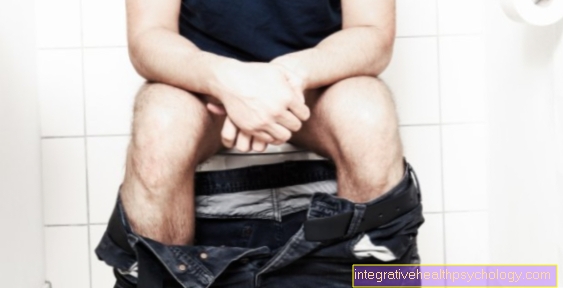
Causes of Green Stool
- too much bile / insufficient bile absorption:
The bile is released for better digestion of the dietary fats. If there is too much bile or if it is not reabsorbed properly, it can turn green
- Green color from food:
Both green food coloring and the natural green dye chlorophyll can cause the stool to turn green
- after taking antibiotics:
Antibiotics kill a large part of the "good" bacteria in the human intestine, which significantly limits the absorption and processing of the chyme in the intestine.
You may also be interested in the following article: Green diarrhea
bile
The bile is usually the first thing the doctor will think of when a patient reports greenish stool. Normally, the bile in the gastrointestinal tract is used to make fats in food more absorbable. As a rule, a large part of the bile is also reabsorbed.
If the absorption in the intestine is disturbed or too much bile is produced or the ingested food is transported through the intestine much faster, for example due to diarrhea, the bile cannot be reabsorbed and is then used as a greenish color that is absorbed with the stool has mixed, excreted.
Also read: Green diarrhea
Food coloring
Food coloring can also be a simple as well as harmless reason for the stool to turn green. While a small amount usually won't change the color, heavy use of green dye can easily cause green stools. The more unprocessed the food coloring is, the more green it is.
But other green foods with a high proportion of chlorophyll can also cause a greenish color change. Green sauce or pea puree would be examples.
after antibiotics
Green stools as a result of taking antibiotics are also not uncommon and are due to the fact that the antibiotic not only attacks the bacteria against which it is supposed to work, but also affects bacteria that are found in the human intestine.
Since the antibiotic is swallowed, it primarily affects the intestinal flora and is only partially absorbed from the intestine and then transported via the blood to the place where it is supposed to work. Rather, the majority of the antibiotic works in the intestine and kills the bacteria there. However, these are important in order to be able to fully digest the food ingested and to extract the maximum amount of nutrients from the food.
If the antibiotic removes these bacteria, the normal digestion of normal food no longer functions properly.
by iron tablets
Taking iron tablets leads to changes in bowel movements in almost everyone. This is due to the fact that not all of the iron can be absorbed in the intestine and is thus simply excreted again through the stool.
As a rule, the resulting color of the stool is rather very dark brown to blackish and not classic green, as would be the case, for example, with changes in stool caused by the bile. The taking of the iron tablets should definitely be mentioned to the doctor.
Read about this too: Black stool
Can that be an indication of cancer?
The one-off occurrence of green stool is not an indication of the presence of cancer. Cancer can only be thought of if it occurs repeatedly, or if the stool is continuously green and there is no other suitable explanation for the green color of the stool.
In general, a tumorous disease of the biliary tract or gall bladder is very rare. Another potential source, however, could be cancer of the liver, which is responsible for the production of bile. As a rule, a liver tumor is preceded by cirrhosis of the liver, which is diagnosed on the basis of many symptoms.
In short: If the liver is the cause, the patients usually know about the possibility of cancer development due to liver cirrhosis. Gallbladder tumors are extremely rare, but they can also manifest as repeated green stools.
Please also read: Gallbladder cancer, liver cancer
diagnosis
A correct diagnosis usually begins with a detailed medical history. This is about how long the problem has been going on and how often the green stool occurs.
If there is no obvious explanation for the attending physician, a sonography, i.e. an ultrasound examination of the abdomen, is usually added. It provides initial indications of the condition and size of the gall bladder and liver.
If this does not allow a clear assessment, endoscopic retrograde cholangiopancreatography (ERCP for short) can be used. This is an ultrasound device that is advanced from the mouth to the small intestine under anesthesia in order to catch a more direct view of the gallbladder. If this examination does not provide any conclusive evidence either, a CT examination is carried out.
You may also be interested in the following article: Bile duct cancer diagnosis
These symptoms tell me that my green stool is abnormal
An admixture of blood in the stool is always suspect. If the stool is not only greenish, but also has blood deposits, this is an indication of a more serious underlying disease and should be clarified as quickly as possible.
It is also a concern if the frequency of green bowel movements increases. So if there is a permanent green stool, this should be clarified.The smell of the stool has no direct illness value. Similar to the color, however, the following also applies here: If this condition persists and no “normal” bowel movements are excreted, a doctor should be consulted in any case.
Flatulence
Flatulence usually occurs in combination with green stool if it is caused by diarrhea. If pathogens that cause diarrhea infect the intestine, certain types of bacteria can lead to increased gas production, which then becomes noticeable in the form of flatulence, as the air has to somehow escape from the intestine.
In general, however, it can also be observed that the metabolism of raw vegetables increases the production of gas in the intestine. If you eat a lot of raw vegetables containing chlorophyll, this can explain the flatulence and the green color of the stool.
You may also be interested in the following article: Green diarrhea
Which green stool is in need of treatment?
- Green bowel movements require treatment when the occurrence increases or green bowel movements become a habit. This corroborates the suspicion of a systemic problem that should be addressed.
- Furthermore, the addition of blood to the green stool is an absolute indication for treatment. This is mostly an indication of a bleeding in the end part of the intestine and can be an indication of a tumor. This should therefore be further clarified in any case.
Please also read: Blood in the stool
- A rather blackish coloration of the stool, possibly with small black lumps, should definitely be examined further. This can be an indication of bleeding in the stomach area, which is very easy to treat.
Also read: Black bowel movements
- Furthermore, if the green stool is accompanied by pain in the abdominal area, it should be clarified and treated if possible.
Green stool in the baby
In the newborn, it is perfectly natural for the first bowel movement to be green in color. This is the so-called meconium, also known colloquially as Kindspech.
It should be eliminated within the first one to two days and can be taken as an indication that the gastrointestinal activity of the newborn is okay. The meconium consists to a certain extent of greenish bile. However, since the fetus has not yet had the opportunity to ingest fatty foods, but has only "drank" amniotic fluid in the womb, a large part of the supplied bile is simply excreted and turns the baby's first very watery stool green.
However, if the subsequent bowel movements of the newborn remain green despite breast milk, a doctor should be consulted.
If, on the other hand, the meconium does not leak after the birth and there is no bowel movement in general, the suspicion of an intestinal obstruction is likely and must be rectified as soon as possible.
Also read: Recognize intestinal obstruction in babies, green stool in babies
Green stool in the child
In the vast majority of cases, green stools in children are a result of diet. Depending on the amount of food ingested, the color of the stool can be more or less noticeable. For example, sweets with a lot of green food coloring can cause a green color.
Increased consumption of green vegetables such as peas, broccoli or green fruit such as green grapes can also trigger the discoloration. Depending on how much the children ate, stomach aches can also occur.
A doctor should only be consulted when the green color persists and the reason can no longer be found in the food being eaten.
You may also be interested in the following article: Colors of bowel movements
Duration / forecast
As a rule, green stool is a one-off event that has its origin in the diet or a short-term dysregulation of the intestine, i.e. it is completely harmless.
As soon as the situation has returned to normal, the stool will also regain its normal color. However, if the green color of the stool continues over a longer period of time, it is essential to investigate the cause. As a rule, these are also harmless causes that can be easily remedied.
The green color is tumor-related only in very rare cases.

